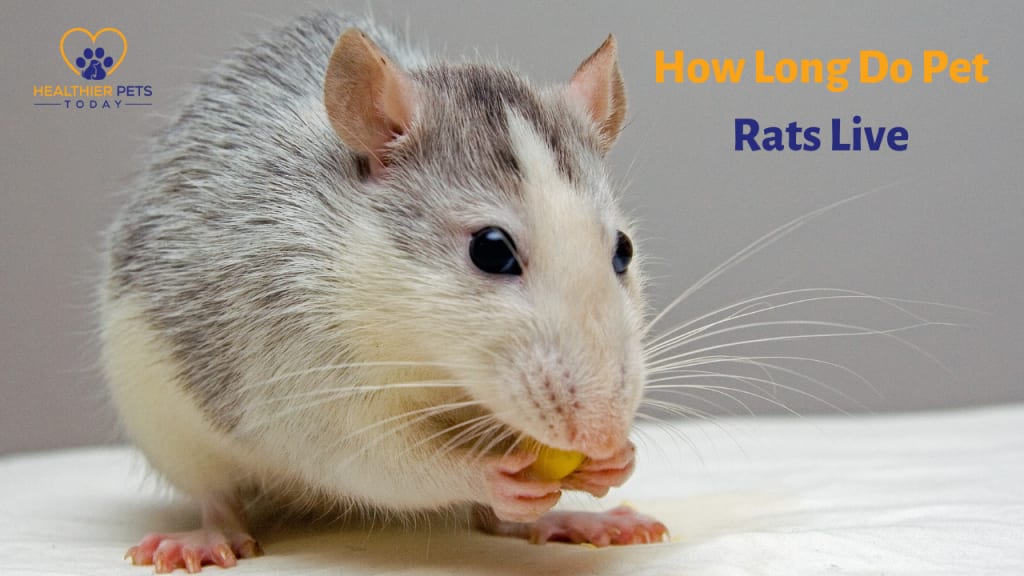Find Out Interesting Facts and How Long Pet Rats Can Live
Interesting Facts About How Long Pet Rats Can Live

If you like to have a rat as a pet, you should know how long rats live and what is their average lifespan. Whether you like it or not, rats are a part of everyday life. Rats make wonderful pets and are adored by many people, despite the misconception that they are disease-ridden and filthy animals. How long do pet rats live? is one of the most frequent queries from prospective rat owners. Unfortunately, the solution is not always obvious. Rat longevity varies significantly based on a number of variables, including heredity, nutrition, and exercise.
What is the Life Expectancy of Rats?
Any specific animal's lifespan is influenced by a number of variables, including its diet, habitat, and susceptibility to predators. Animals of lesser sizes typically live shorter lives than those of larger species. For instance, an African elephant has a lifespan of approximately 70 years compared to a house mouse's two-year lifespan on average. Similar to humans, animals in captivity frequently have longer lives than their counterparts in the wild.
The typical longevity of a gorilla in captivity, however, is over 50 years, while that of a gorilla in the wild is only approximately 35 years. In the end, an animal's biology and way of life will determine how long it will live.
Here are some Factors in Determining The rat Lifespan
When estimating the lifespan of rats, numerous aspects must be taken into account. The type of rat is the first and most important aspect. For instance, whereas wild rats normally only live one to two years, laboratory rats have an average longevity of two to three years. Longevity is also influenced by diet, with rats who are fed well typically surviving longer than those that are not. For instance, rats in the wild typically live shorter lives due to predators and other risks, while rats in captivity are shielded from these dangers. Traditionally, female rats lived longer. Diet, physical activity, and genetics are all factors that determine a rat's lifetime. Rats' lifespans can also be influenced by lifestyle decisions like exercise and stress reduction.
Here are some Interesting Facts About Rat’s Lifecycle
Rats are intriguing animals, and studying their life cycle is fascinating. Rats are born with hearing and vision impairments. They completely rely on their mother for food and protection. However, they quickly outgrow this stage and gain the ability to see and hear. They soon start to investigate their environment and interact with other rats.
Rats typically have a lifespan of two to three years in the wild, although they can live up to eight years in captivity. Rats can have four to fourteen young throughout their lifetime. Rats are intelligent creatures that can make devoted and adoring pets even though they are sometimes viewed as pests. Rats, despite age-related changes, can live for many years if given proper care.
What are the Stages of the Rat Life Cycle?
Stage One – The Baby Rat
Rats are dependent on their mother for a very long time because they are born without senses or the capacity to walk. They also experience overgrowth during this time, even after only one week of being self-sufficient. Babies regain their vision and learn to walk while also being able to carry food. All baby rats are upright, learning how to best protect themselves against any impending danger after two to three more weeks, but not before offering kisses goodbye.
Stage Two – The Juvenile Rat
A rat's juvenile stage lasts for around eight weeks, during which time they grow and acquire necessary abilities. During this time, their brains are rapidly expanding and developing, making them very open to new experiences. During this period, individuals pick up new skills and develop social skills. Rats' developing sense of smell, which is necessary for finding food and avoiding predators, also starts to happen during this stage. Rats will have grown to their maximum adult size and cease growing after the juvenile period. As their brains continue to shrink in size and function, rats will now spend the remainder of their lives gradually losing muscle mass and bone density.
Stage Three – The Adult Rat
A rat usually matures at the age of six months. They are now able to reproduce. Rats that are adults typically weigh between half a pound and a pound and are larger than their juvenile counterparts.
Adult rats can battle each other for food or territory and are violent. However, not every adult rat is aggressive; some could be more submissive than others. The loss of baby teeth and the growth of longer, sharper incisors are two further morphological changes that take place during maturity. When it comes to behavior, adult rats tend to be more active and regularly explore their surroundings than youngsters. They may also spend less time around other members of their species and have a tendency to be more independent.
Final words
After reading the above-written points, hope you get the answer to your question “How long do domestic rats live?”. Apart from this, if you have any queries regarding this post, you can ask us in the comment section; we will surely answer your questions.
About the Creator
Healthier Pets Today
HealthierPetsToday is a website dedicated to providing pet owners with the latest information and resources on pet health and wellness.






Comments
There are no comments for this story
Be the first to respond and start the conversation.